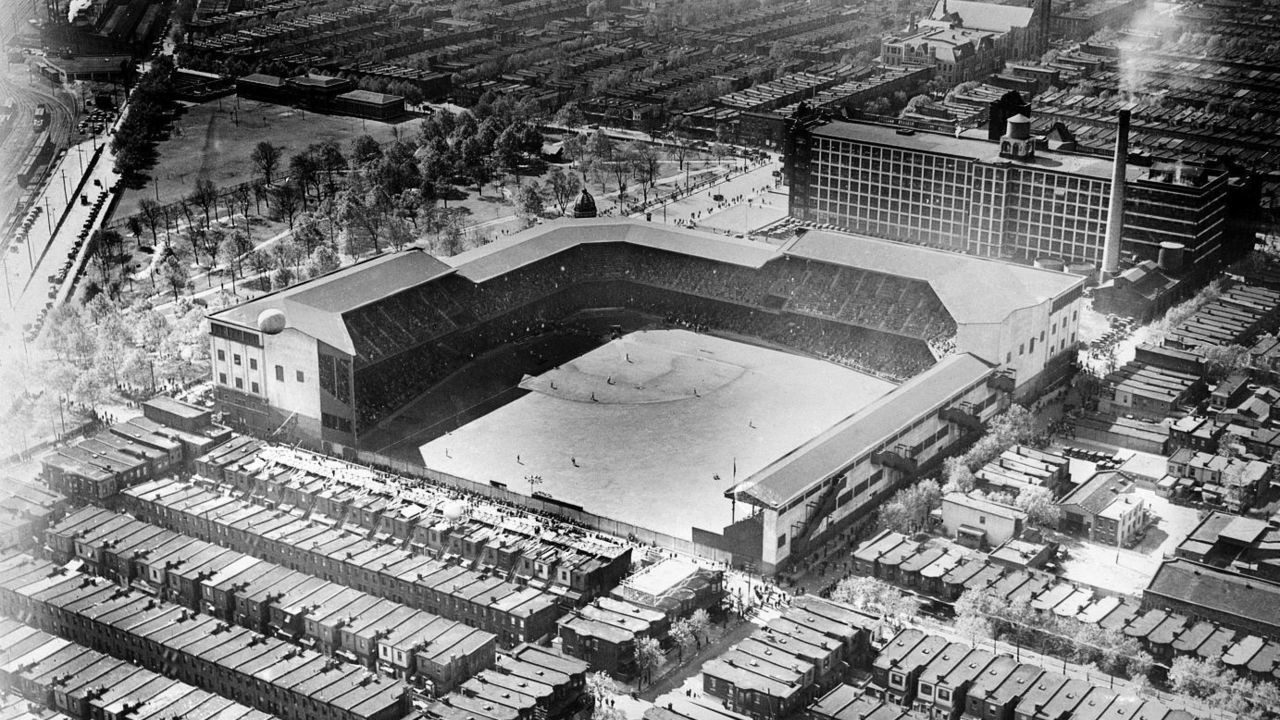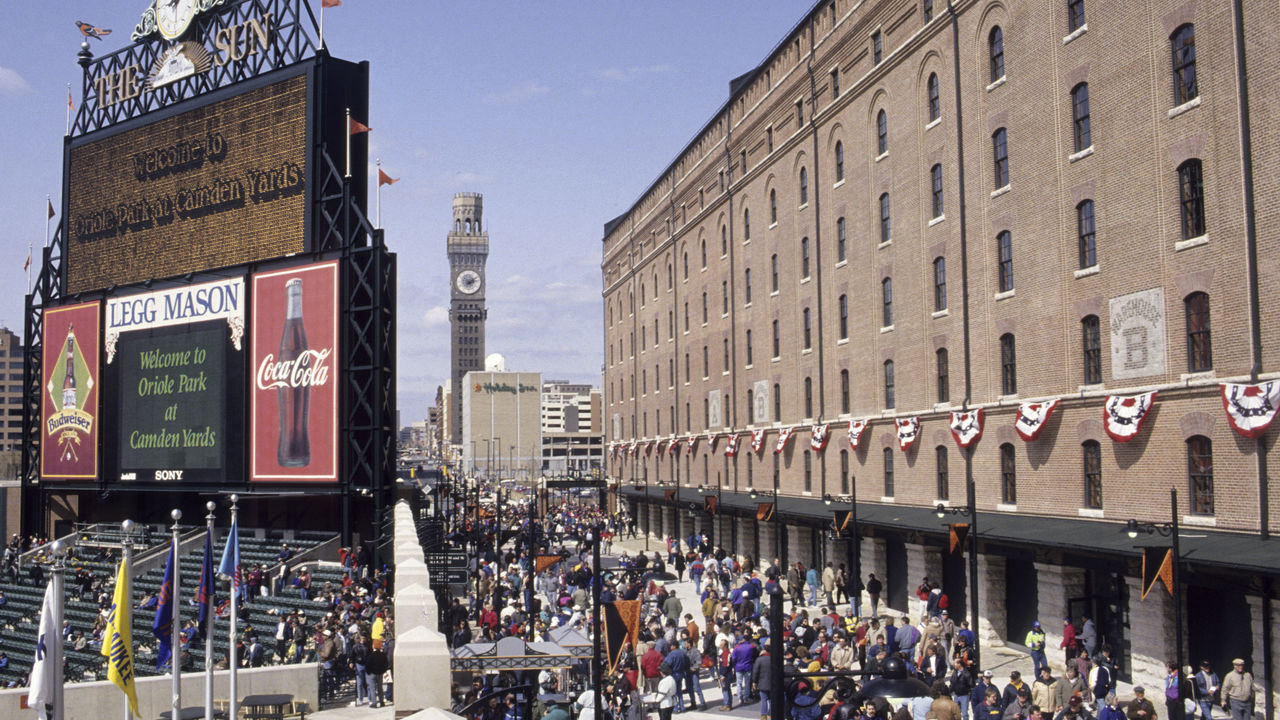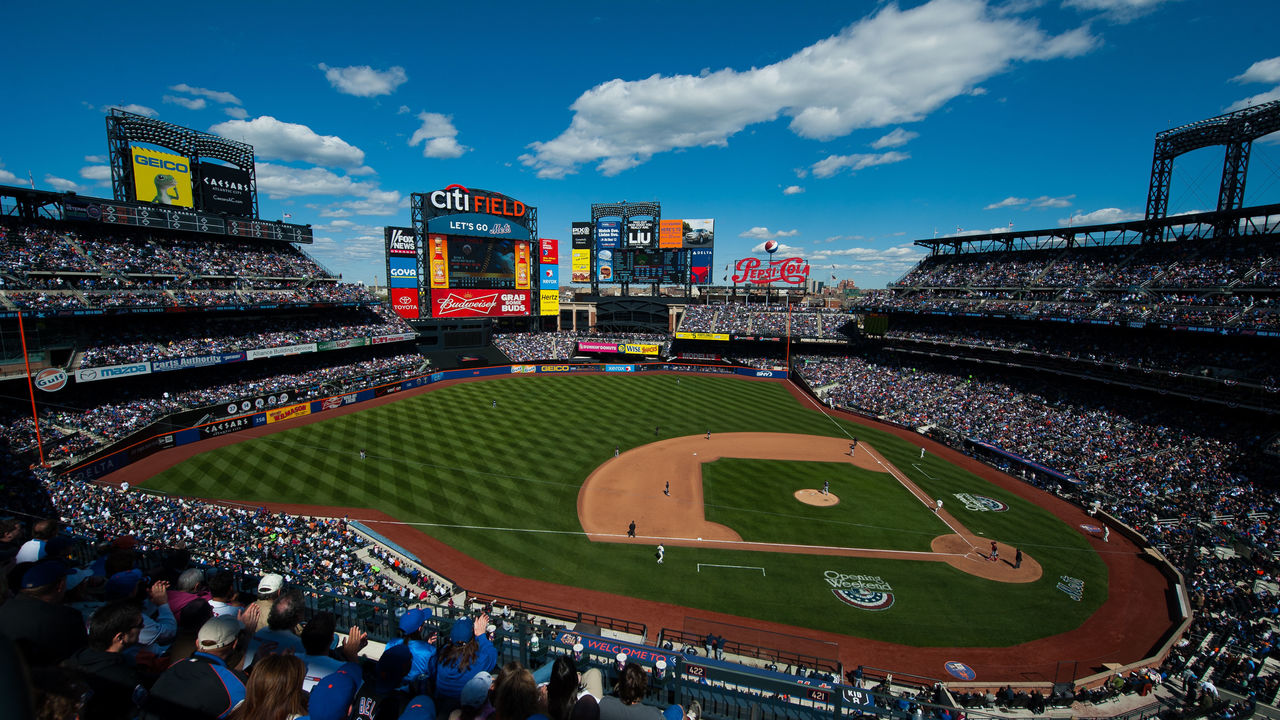Camden Yards launched the cozy-ballpark era. Now it wants to upsize
There is a nearly universal law when it comes to ballpark evolution: Playing surfaces are shrinking.
Major-league parks in the modern era, kick-started by the opening of Camden Yards 30 years ago, generally feature less square footage than the MLB homes that preceded them.
And teams have tinkered with stadiums throughout baseball history, adjusting dimensions that weren't as favorable as hoped. Outfield fences have mostly been moved closer to home plate to encourage more offense.
But the Baltimore Orioles announced last week that they would buck the trend and move back the left-field fence at Camden Yards.
General manager Mike Elias told reporters that when he was brought in to rebuild the franchise more than three years ago, he was charged with taking a fresh look at everything, and it turns out that included the ballpark. He felt it had become an impediment to the Orioles.
"It is being done with the goal in mind of bringing the playing conditions more toward the league norm," Elias said last week of the change. "Since inception, it's been an extreme park for home runs. That has only grown as the style of play in the major leagues has evolved."

The space race
The first steel-and-concrete stadiums that emerged in the early 20th century, now known as "jewel-box parks," averaged 416 feet from home plate to center field, according to data from the Clem's Baseball's stadium database. The distance averaged 407 feet in stadiums built from 1923-91 and 403 feet in the new, Camden-era ballparks.
The average power-alley distances haven't changed as much - the average distance to left-center in jewel-box era parks was 377 feet, remained the same for stadiums built in the middle era, and ticked down to 373 feet in stadiums built since 1991. (The right-field gaps average 367, 372, and 374, respectively).
The field dimensions of yore that made it nearly impossible for many batters to hit a ball out of the park have gone extinct. The days of distances like 483 feet to center field at the Polo Grounds, or the 457-foot, left-center power alley at the original Yankee Stadium, are over. Overall, the gap-to-gap square footage has generally fallen.
It's foul territory, though, where ballparks have shrunk dramatically. Since 1992, the newest parks average 22,700 square feet of foul territory, compared to 27,900 in those parks built between 1923-91 and 28,500 square feet in the jewel-box era. That squeeze - 19% and 21% declines - reduces foul-outs and gives batters more lives at the plate.
And after stadiums open, their outfield dimensions usually contract.
Long since demolished stadiums like Shibe Park, Sportsman's Park, Tiger Stadium, and the original Comiskey Park and Yankee Stadium brought portions of their fences in. Fenway Park with its right-field bullpens and Wrigley Field have also reduced depths since their debuts. Dodger Stadium, the gem of the mid-century era, never changed its fences, but it did move home plate 10 feet forward in 1969. The Dodgers also eroded foul territory over the years with multiple seating additions.

Of the 23 modern-era parks, 10 have moved in at least part of their fences, and two, the Mets' Citi Field and the Marlins' loanDepot Park, moved in significant portions of their outfield walls twice. Three ballparks have reduced fence distance by more than 20 feet in certain areas of the outfield: Citi Field, loanDepot Park, and Comerica Park in Detroit.
Only two venues have gone in the opposite direction. Citizens Bank Park in Philadelphia pushed back its left-field wall a few feet in 2006, according to media reports and an analysis of the ballpark diagrams at Clem's Baseball. Coors Field in Denver also raised a portion of its right-field wall.

But just as the Orioles broke with convention 30 years ago by building an asymmetrical ballpark that fit within the constraints of city streets and an old railroad depot - a decision that sparked the greatest stadium boom and design change since Shibe Park opened in 1909 - they're doing it again with this latest project.
Backing out
The Orioles decided to push their left-field wall back nearly 30 feet for most of its length and will also raise the wall to a height of 13 feet.
Coming for the 2022 season. pic.twitter.com/axNJe1PMvX
— Baltimore Orioles (@Orioles) January 14, 2022
Since 2008, Camden Yards leads the majors in home runs hit and homers hit by right-handed batters. The AL East is loaded with right-handed power hitters. Since the venue opened, the Orioles have been outhomered there 2,090 to 2,018. It's not hard to understand why the Orioles might want to take some juice out of their park.
Elias said part of the impetus for the change is attracting pitchers to sign. While the Orioles' ownership group might not be willing to pay for aces, Camden's cramped confines reduce the club's appeal to mid-tier and reclamation arms.
"Part of having a winning program is the ability to recruit free-agent pitchers," Elias said. "That has been a historical challenge for this franchise. There's no way around that. I do think it will help."
👀 First look at construction on Camden Yards' new left field wall pic.twitter.com/whQSN9rgEf
— Orioles on MASN (@masnOrioles) January 13, 2022
Left-handed Orioles pitcher John Means is likely thrilled with the remodel. Orioles right-handed bats Ryan Mountcastle and Trey Mancini? Not so much.
Elias compared the new look of left field to that of PNC Park in Pittsburgh, whose outfield dimensions will be a close comparison. The Pirates' left field is the deepest in the game in some stretches - deeper than Coors Field.
PNC Park ranks 28th in home runs since 2017, ahead of only loanDepot Park, Oracle Park in San Francisco (which brought in the center-field wall in 2020, partly to relocate bullpens), and Globe Life Field, which opened in 2020. PNC and Camden Yards will still rate favorably for left-handed batters, though.
Will all that jackhammering and concrete removal be worth it? Or will the Orioles change their minds in the future and be forced to fill in the dead space, like the Mets were with their left-field void?

Andrew Perpetua, who previously worked as a consultant with the Mets, collected batted-ball data from Camden Yards and plotted it against the old and new dimensions of the ballpark to understand the impact of the modification.
He determined that the change could eliminate around 38%-53% of home runs to left field, which would represent up to 18% of home runs park-wide.
"Long story short, Camden goes from a consistently top five (hitter's) park … to a consistently bottom five park," Perpetua tweeted.
Looking at homers in left field of Camden Yards from 2019 through 2021 and comparing to new dimensions. I made the following groups by eye, nothing scientific. 94 homers lost. 110 homers over new fences. 37 Maybes. Assume half the maybes are homers and you get a 47% reduction. pic.twitter.com/SYw5vg4tS2
— Andrew Perpetua (@AndrewPerpetua) January 15, 2022
The Orioles aren't shooting for another extreme, though. Their goal is for Camden Yards to be the Switzerland of MLB.
Sig Mejdal, the Orioles' assistant general manager and vice president of analytics, said the team arrived at the new dimensions with the help of a fuller set of Statcast data than the public can access.
"We're privy to the Statcast data, so we can model a bit better than third parties," Mejdal told reporters. "We wanted to take this step, a significant step, toward neutrality."
But a significant step in favor of pitchers generally isn't popular with fans, teams, or the home team's hitters.
A few months after Comerica Park opened in 2000, then-Tigers slugger Juan Gonzalez expressed his displeasure with the immense depth in left field and said moving the fences in was "a necessity." The park was part of the reason Gonzalez turned down a lucrative extension offer, as his home-run total fell to 22 that season after he'd averaged better than 40 over the previous four years with the Texas Rangers.
In 2003, the Tigers brought almost all of the left-field fence in by 25 feet and relocated both bullpens to the vacated space.
Citi Field debuted in 2009 with a similarly spacious left field and a wall that ranged from 12-15 feet in height, dubbed the "Great Wall of Flushing." The Mets pulled in nearly their entire outfield perimeter in 2012 and brought in some sections of the fencing again in 2015.

Citi Field's party deck is a reminder of the tens of millions of dollars spent building three decks of grandstands further away from the field than they needed to be. It's also a reminder that fans and owners have tended to prefer scoring and home runs ever since Babe Ruth began swatting them out regularly a century ago.
Perhaps the Orioles can nail their attempt to cool off homers without becoming a place where fly balls go to die.
Perhaps in this era of record home-run totals, there is more of an appetite for a retro style of play, trading some power for contact and sprinkling more triples into the left-center gap.
Perhaps 30 years after it changed baseball, Camden Yards can do so again by providing a road map to ballpark neutrality. Perhaps it can even help the Orioles win.
Travis Sawchik is theScore's senior baseball writer.
HEADLINES
- Umpire ejects Yankees' Boone over fan's heckle
- Report: Orioles to call up 2020 No. 2 pick Kjerstad
- Suárez runs shutout streak to 25 IP as Phillies win 7th straight
- Brewers' Junis taken to hospital after struck in neck by ball during batting practice
- Orioles move into 1st in AL East with 10th win in last 13 games